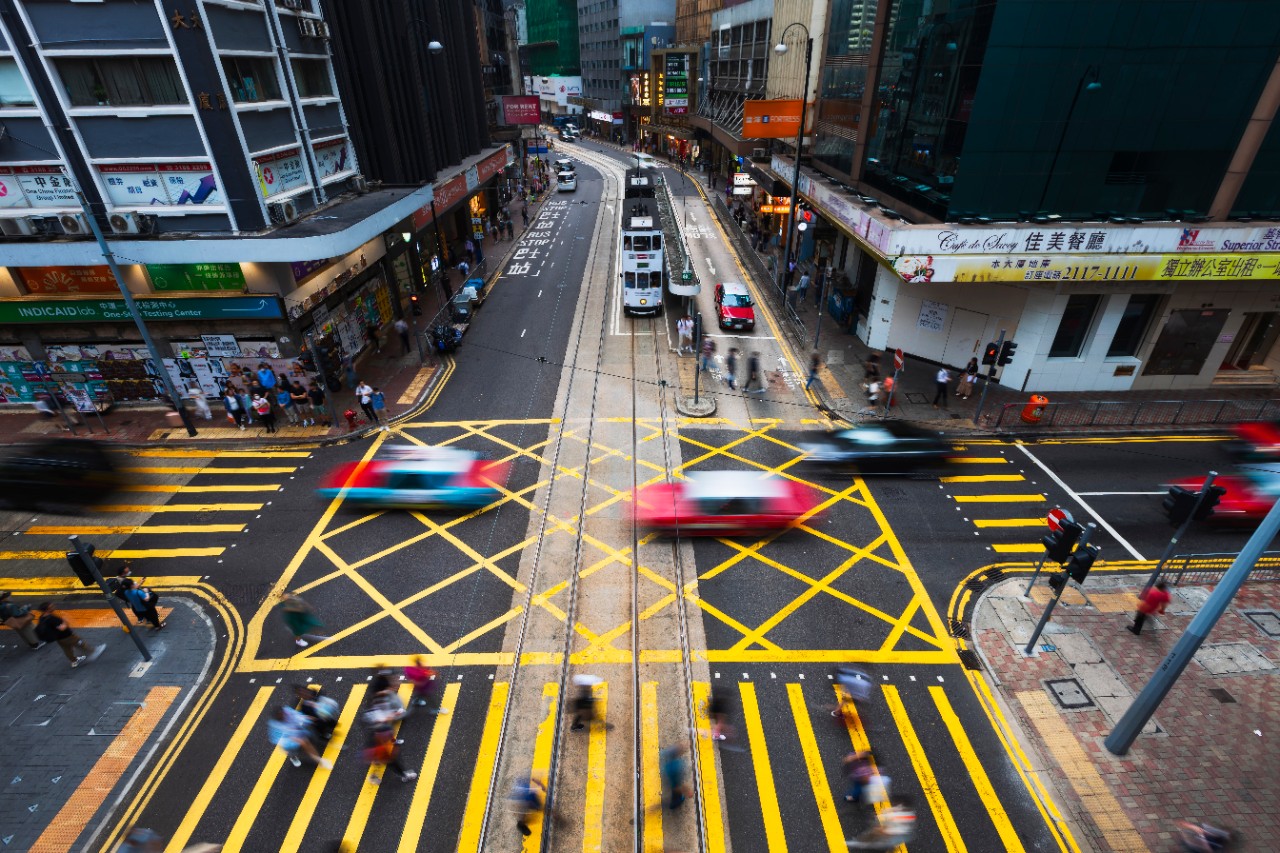This article originally appeared in the World Economic Forum on May 29, 2024.
Transport emissions account for about one-third of urban carbon footprints, but cities need more than a great mass transit system to meet climate goals. They also must have a clean energy grid, amenities such as cycling paths and electric vehicle (EV) charging stations, and public-private partnerships to support the necessary projects.
A case in point is Hong Kong, SAR China. The city boasts the top public transit network in the world, according to the Urban Mobility Readiness Index, co-created by the Oliver Wyman Forum and the University of California, Berkeley. Its densely connected stations, affordable rates, and efficiency make it an incredibly popular choice for commuters.
But while a strong public transit system is by far the most sustainable way to transport large groups of people, Hong Kong won’t meet its 2030 climate goals without other significant changes because of its carbon-heavy power grid, according to analysis by Oliver Wyman Forum.
Hong Kong's sustainable mobility divide
For Hong Kong to limit global warming to 1.5°C, in accordance with the United Nations’ Paris Agreement, it would have to slash transport emissions by 59% in just six years. The city government, however, has plans for zero-carbon electricity generation before 2050.
That contrasting nature between a strong sustainable mobility ecosystem and a warming climate trajectory offers three lessons for governments looking to decarbonize.
Double down on your strengths
What separates the top cities in the Urban Mobility Readiness Index is the continued investment in their mobility networks – particularly investments that build on their strengths.
Hong Kong’s public transit system has one of the highest ridership levels in the world, accommodating 71% of all distance travelled within the city. Its popularity among residents has kept car ownership rates well below those of its peers like Singapore or Tokyo.
Even so, the city is doubling down on public transit to reach even greater heights. In 2023, for example, work began on a new station that would anchor an upcoming railway loop to bridge a connection between the eastern and western parts of the New Territories, a major region of Hong Kong.
Strengthening public transit is vital for Hong Kong. Only 13% of trips in the city are made via walking, according to the Urban Mobility Readiness Index.
With a combustion engine vehicle ban set for 2035, Hong Kong should provide as many car alternatives as possible before EV sales become mandated. Building more stations that make it convenient for as many residents as possible to access public transit is a sustainable method of keeping car ownership levels low.
Leverage the private sector
Inflation and energy prices have sent government debt to record highs. For cities to fund more bike lanes, EV charging infrastructure, or public transit stations, they should consider an outside-the-box approach.
Hong Kong’s public transit provider MTR, for example, can serve as a model: MTR employs a programme called Rail Plus Property to fund its transit services. MTR pays the government a land premium in accordance with the value of the land without any railway.
After developing new rail lines on land surrounding its stations, MTR subsequently receives a profit share from developers who build on that land. These funds allow MTR to expand its transit system while keeping fares affordable.
While MTR’s revenue stream is difficult to replicate in other cities, the same spirit of public-private relationships can be applied elsewhere. Lagos, for example, leveraged the private sector to build a 23-mile rail line, and Los Angeles is working with a developer to build affordable housing along its metro lines.
Cities and energy providers should likewise take note of the opportunity in sustainable power generation. Global venture capital investment in clean energy startups reached a record-breaking $12.3 billion in 2022. A combined $5.5 billion of that funding supported startups offering solutions in renewable energy like solar and wind generation, and grid and energy efficiency, according to the Oliver Wyman’s 2024 Mobility Investment Radar.
Clean energy is essential
Despite its excellent public transit service, Hong Kong’s warming trajectory is expected to rise to 3.5°C by 2030, according to an Oliver Wyman Forum analysis – far from the goal of limiting global warming to 1.5°C.
Hong Kong’s carbon-heavy energy grid – which powers the city’s public transit system – is the main barrier that prevents the city from drastically lowering emissions. Without transitioning to low-carbon energy, Hong Kong would have to make drastic choices to lower emissions. Decreasing mobility demand by 38%, for example, would enable the city to reach its emissions goals, but that is not a realistic solution.
And while the city’s Climate Action Plan aims for net-zero electricity generation by 2050, Hong Kong authorities have acknowledged that there is an urgent need to act in the short-term.
“If we look at the next seven years, a majority of the decarbonization effort will come from electricity generation,” Jacob Kam, CEO of Hong Kong public transit provider MTR, told the Oliver Wyman Forum in a recent interview. “We understand that we’ll have to pay more in electricity tariffs to enable the electricity companies to decarbonize, but we’re willing to do that to support their work.”
Hong Kong isn’t alone. Berlin has strong public transit and cycling infrastructure and the lowest car-per-person ratio in Germany. Yet, a carbon-heavy energy grid is a major barrier to achieving its climate goals. The German government recently agreed on a $17 billion subsidy plan for power plants that transition to hydrogen from gas and coal.
Hong Kong’s dense public transit network gives it a strong foundation for achieving its emissions goals, but we must go beyond. Cities need holistic mobility plans that consider more than just the modes of transit commuters use, taking into account everything from their energy sourcing to the appropriate public-private partnerships.

